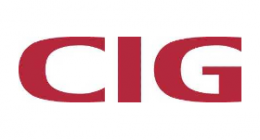

100G Lambda MSA is an industry consortium with a common focus to provide a new set of optical interface specifications, developed around an optical channel data rate of 100Gb/s. These specifications are targeted for 100GE and 400GE applications to be used as cost effective solution for high density multi-Terabit Switching, Routing and Transport networks.
100G Lambda MSA defines 100G PAM-4 optical signaling and encoding, FEC and link characteristics for 100G and 400G applications using 100Gb/s per optical channel for 2km and 10km reaches. The MSA will leverage the IEEE 802.3 draft specifications and methodology for similar 100 Gb/s single channel specifications over 500m of single-mode fiber – specifically 100GBASE-DR and 400GBASE-DR4. The MSA specifications will be consistent with the IEEE specifications in PAM4 signaling and RS (544, 514) FEC to maintain compatibility with existing system and PHY technology currently under development.
Currently, the most popular 100Gb/s optical standards such as 100GBASE-LR4, 100G-CWDM4, 100G-PSM4, rely on 25 Gb/s optical lanes that align with 25Gb/s SERDES commonly used on ASICs for the switching, routing and transport applications. As ASIC SERDES increase in speed, it is necessary to increase the optical channel speeds to avoid additional cost that comes from needing to translate to slower speeds. Cost savings can further be realized by reducing the number of optical lanes and increasing the speed from four times 25Gb/s per lane to a single lane of 100Gb/s. It has been recognized by the IEEE and the members of this MSA that a single optical lane of 100Gb/s can be at least 40% lower cost than four lanes of 25G. The MSA members expect 400 Gb/s specifications defined by the MSA using 100Gb/s per optical channel will be much more conducive to high density, and lower cost, implementations in module form factors and networking systems.
San Jose, CA – December 7th, 2020 – The 100G Lambda Multisource Agreement (MSA) Group, which has grown to comprise 45 member companies, is pleased to announce the release of three enhanced 100 Gigabit Ethernet (GbE) specifications, extending the reach to three distinct lengths of up to 20, 30 and 40 km over single-mode fiber. These specifications are based on 100 Gb/s per wavelength PAM4 optical technology that the MSA was founded on and has been promoting. The specifications are primarily targeting applications for service providers, data center operators and enterprise networks, including emerging 5G wireless networks, enabling multi-vendor interoperability for optical transceivers produced by different manufacturers in various form factors.
Building upon its success of previously published and broadly adopted 100G-FR and 100G-LR as well as 400G-FR4 specifications, the MSA members have developed these new specifications to fully address market requirements known as 100G-LR1-20 for 20 km reach, and 100G-ER1-30 and 100G-ER1-40 for 30 and 40 km reaches, respectively. “Single-wavelength 100G PAM4 optical technology has gained industry-wide adoption”, said Mark Nowell, 100G Lambda MSA co-chair. “These longer reach specifications will further accelerate broader industry acceptance of single-wavelength 100G solutions, especially for service providers and carriers who are in high demand of efficient and ...
San Jose, CA – October 8, 2020 – The 100G Lambda Multisource Agreement (MSA) Group, which has rapidly grown to include 45 member companies, is pleased to announce the release of a 400 Gigabit Ethernet (GbE) specification up to 10 km based on 100 Gb/s per wavelength PAM4 optical technology. This specification is targeting applications for data centers and service provider networks, enabling multi-vendor interoperability for optical transceivers produced by different manufacturers and in various form factors. The new 400GbE specification is designated as 400G-LR4-10 for duplex single-mode links up to 10 km and relies on multiplexing 4 wavelengths of 100 Gb/s PAM4 modulated optical signals.
Building on the success of its previously published and broadly adopted specifications, the MSA members developed the 400GbE specification to fully address market requirements for 2 km to 10 km reaches over duplex single-mode for both 100GbE and 400GbE. The MSA believes that the 10 km reach specification will be fully interoperable with the 6 km version being developed by another industry standards group. The nomenclature use of “-10” in 400G-LR4-10 will inform users of the target reach.
“Industry organizations are valued for producing rigorous specifications assuring reliable, interoperable communications,” remarked Dale Murray, Principal Analyst for LightCounting Market Research. “The 100G Lambda MSA members were able ...
Rome, Italy – September 20, 2018 – The 100G Lambda Multi-source Agreement (MSA) Group, which has rapidly grown to include 39 member companies, has announced the release D2.0 of three specifications based on 100 Gb/s per wavelength PAM4 optical technology. These specifications are targeting applications for data centers and service provider networks, enabling multi-vendor interoperability for optical transceivers produced by different manufacturers and in various form factors. These updated 100 GbE interface specifications are designated as 100G-FR and 100G-LR for duplex single mode links over 2 km and 10 km respectively. The MSA has also updated the 400G-FR4 specification for 400 GbE duplex single mode fiber links relying on multiplexing 4 wavelengths of 100 Gb/s PAM4 modulated optical signals. In addition, the MSA is also working on a 400G-LR4 specification for a 10 km reach at 400 GbE.
In addition, members of the 100G Lambda MSA Group announce the success of their optical interoperability private plugfest. In total, 12 of the member companies came together for two and a half days of testing to validate the compatibility, testability and optical interoperability between members’module or test equipment designs for the newly released specifications. The activity was hosted by MSA member company MultiLane. The areas of focus for this event included ...













































